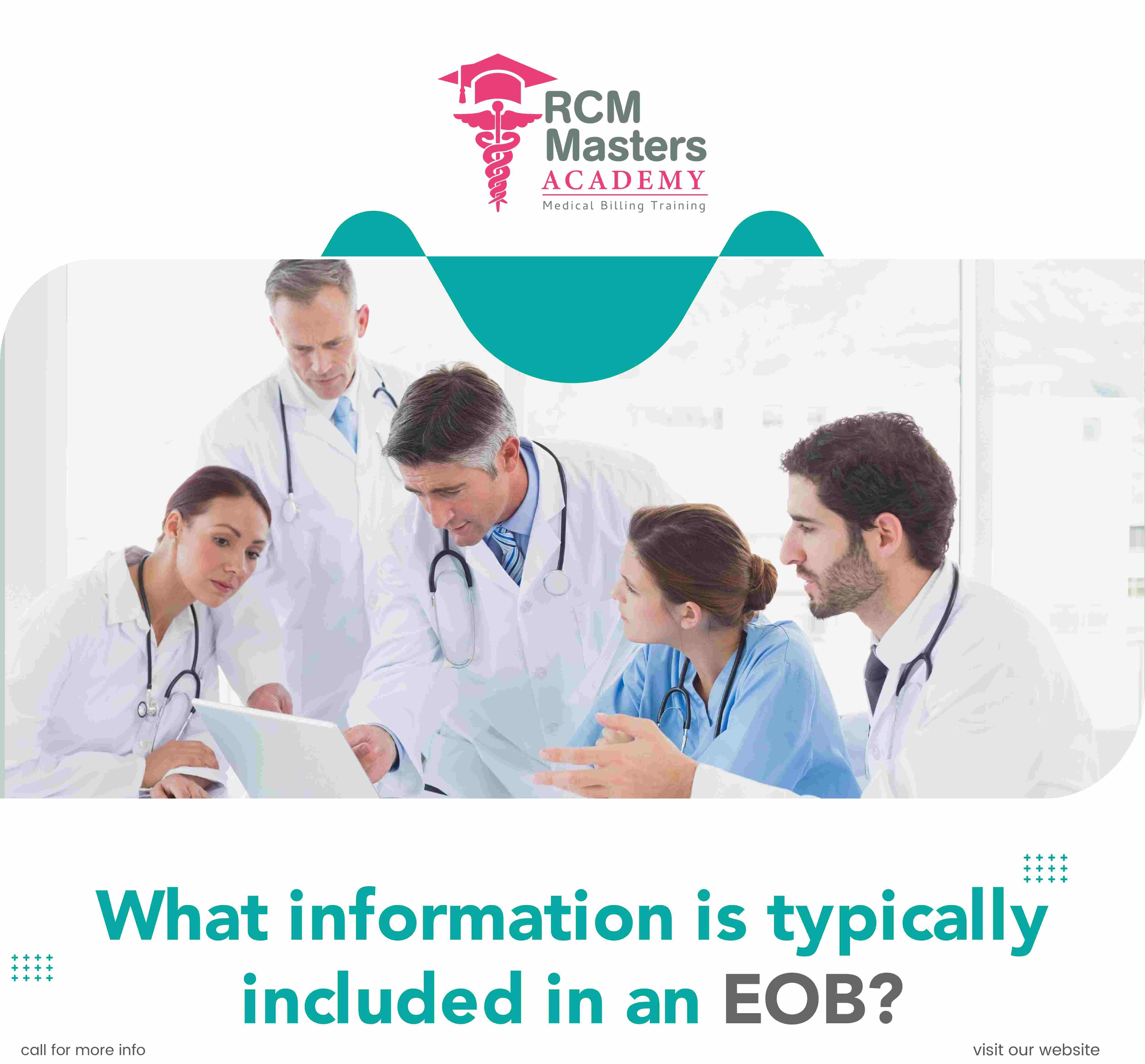 info@rcmmastersacademy.com
info@rcmmastersacademy.com

An Explanation of Benefits (EOB) is a document that an insurance company sends to its members to explain how a medical claim was processed. EOBs are a critical aspect of medical billing, as they provide important information to both the patient and the healthcare provider. We will explore the various types of information that are typically included in an EOB.
1. Patient Information
The first section of an EOB typically includes the patient's name, address, and date of birth. This information is important to ensure that the claim is being processed for the correct individual. The patient's identification number may also be included in this section.
2. Provider Information
The next section of an EOB typically includes information about the healthcare provider who performed the service. This may include the provider's name, address, and identification number. This information is important to ensure that the claim is being processed for the correct provider.
3. Date of Service
The date of service is another critical piece of information included in an EOB. This information helps the patient and the healthcare provider keep track of when the service was performed and when the claim was processed.
4. Service Description
The service description section of an EOB provides a detailed description of the service that was provided. This may include the CPT code, which is a standardized code that describes the service provided. The service description also includes the cost of the service and any adjustments made to the cost.
5. Deductibles and Co-payments
The deductible and co-payment section of an EOB provides information on how much the patient owes for the service. This includes any co-payments or deductibles that the patient is responsible for paying.
6. Allowed Amounts
The allowed amount section of an EOB provides information on how much the insurance company is willing to pay for the service. This amount may be different from the actual cost of the service, and any difference may be the responsibility of the patient or the healthcare provider.
7. Claims Processing Details
The claims processing details section of an EOB provides information on how the claim was processed. This may include information on whether the service was approved or denied, and if denied, the reason for the denial. This section may also include information on any appeals process that may be available to the patient or healthcare provider.
8. Contact Information
Finally, the EOB may include contact information for the insurance company or the healthcare provider. This information can be used to ask questions about the claim or to get more information about the service that was provided.
An Explanation of Benefits (EOB) is a document that provides critical information about how a medical claim was processed. The information included in an EOB typically includes patient and provider information, the date of service, a detailed description of the service provided, deductibles and co-payments, allowed amounts, claims processing details, and contact information. Understanding the information included in an EOB is essential for both patients and healthcare providers to ensure that claims are processed accurately and that patients are aware of their financial responsibilities.
You can enroll for our Online Medical Billing Training here: